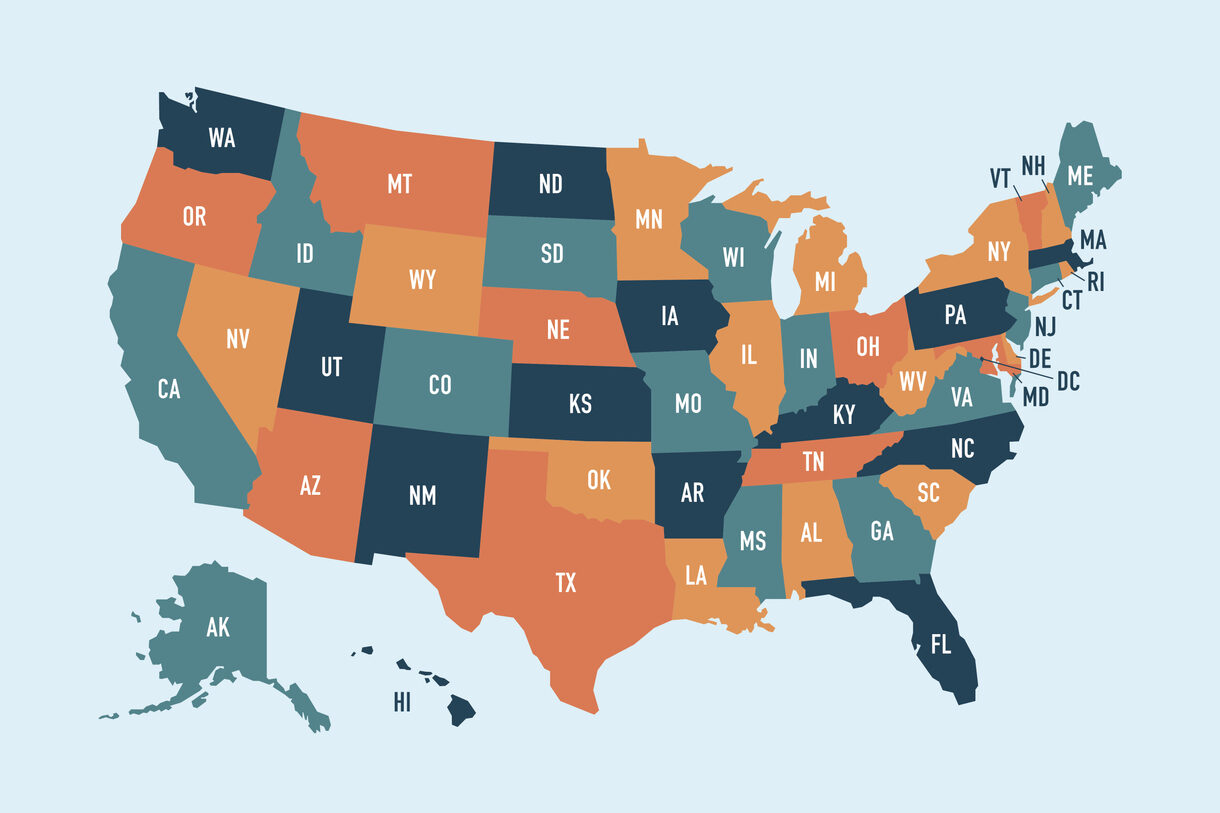The Case for IES: Four Ways States Use Federal Data to Guide Postsecondary Research and Policy
Published Jul 02, 2025
Data from the Institute of Education Sciences (IES) provide vital insights on key higher education issues that inform evidence-based policymaking across the country. For state leaders grappling with questions about college affordability, as well as student access and success, federally collected and maintained postsecondary data—such as the Integrated Postsecondary Education Data System (IPEDS) and the National Postsecondary Student Aid Study (NPSAS)—offer critical insights that many states could not produce on their own.
To understand how federal data systems support states’ efforts, IHEP spoke with experts from state higher education agencies and policy organizations in Virginia, Maryland, and Michigan. Their responses highlight four key ways federal data make their work possible: benchmarking student progress, guiding state budgeting, ensuring data consistency, and expanding state data capacity.
Unfortunately, our nation’s federal postsecondary data infrastructure is now in jeopardy. Mass layoffs and contract cancellations at IES now threaten the future of key postsecondary data. Without the data, states could lose essential tools to make evidence-based decisions and promote student success.
1) States Use Federal Data to Benchmark Progress Against Regional and National Trends
States rely on federal data collected in IPEDS to benchmark metrics like college enrollment, persistence, and completion against peer states and national trends. These comparisons support state policy development by revealing areas for improvement. For example, some states utilize federal data to compare tuition levels with those in other states and, in response, adopt policies to enhance affordability.
Deputy Secretary of Higher Education Elena Quiroz-Livanis of the Maryland Higher Education Commission emphasized that data from the National Center for Education Statistics (NCES) are used to inform policy.
“Maryland relies on NCES data tables to compare its progress with national trends and to inform state policy development, recognizing that states often do not have the resources to create comparable data systems themselves,” Quiroz-Livanis said.
Yet, the mass layoffs of IES staff overseeing IPEDS and termination of a key training contract supporting use of the system threaten this vital benchmarking tool, even while data collection continues.
2) States Use Federal Data to Support State Budgeting
Federal data also play an important role in state budgeting and forecasting. States use information from federal sources like IPEDS and NPSAS to estimate institutional revenue and expenses, forecast student financial aid needs, and refine aid allocation formulas. Federal data are especially important in states where higher education offices have limited authority to collect such information directly from institutions. For example, federal classification changes to financial information provided by Free Application for Federal Student Aid (FAFSA) applicants significantly impacted data sharing and state budgeting in Virginia. When the state needed to model the impact of new FAFSA data sharing restrictions, the State Higher Education Executive Officers (SHEEO) Association stepped in to help states fill the gaps using NPSAS data.
Lee Andes, Director of Finance and Policy Innovation at the State Council of Higher Education for Virginia (SCHEV), recalled that the data helped inform how a federal change in the calculation of students’ financial aid eligibility would shift state budget projections. The data also revealed that some previously eligible students would likely lose access to state financial aid.
“With this information, we were able to request that our legislature permit state aid disbursements on some students be based on financial need from the prior year,” Andes explained. “This change helped us ensure that more students received the funding they needed to enroll in and complete college.”
Now, with NPSAS and other federal datasets in limbo, states may lose the ability to make similarly informed budget decisions.
3) States Use Federal Data to Ensure Data Consistency
Federal data reporting requirements also set the standards for state practices. IPEDS, for example, provides definitions and methodologies for calculating key indicators like net price that colleges and states can adopt to ensure accurate, reliable comparisons. That standardization helps researchers, practitioners, and students alike.
“Without IES to set the bar for common data definitions or methodologies,” said Meghan Schmidbauer, Senior Director of Detroit Drives Degrees at the Detroit Regional Chamber, “consistency across institutions in Michigan would further erode, and the ability to inform policy with evidence would diminish.”
Alignment across institutions, college systems, and states makes it easier to replicate analyses, identify best practices, and ensure access to accurate and actionable information.
4) States Use Federal Data to Extend Capacity
Federal data sources provide comprehensive information far beyond what individual states can gather on their own. Because IPEDS reporting is mandated for all institutions receiving federal aid, states can also save significant time and resources they would otherwise spend building duplicative systems by leveraging free, publicly accessible data tools.
“Federal data significantly enhance our internal data collections by providing valuable context that elevates the quality of our research and advocacy,” said Barbara Schmertz, Director of Research and Policy Analysis at the Maryland Higher Education Commission “Without access to these federal resources, we would face substantial financial and staffing barriers to independently collect and report comparable data, which is likely to strain our capacity and diminish the overall effectiveness of our work.”
When state budgets are tight and technical capacity is limited, federal data systems make high-quality research and policy development possible.
The Urgent Need to Sustain Federal Postsecondary Data
These are only a few examples of how states rely on federal data. States also utilize federal data in other ways including validating research findings, developing college access and success programs, and building robust state longitudinal data systems.
In each case, students benefit. This is especially true for students who have been historically underserved by postsecondary education. For these students, the chances of enrolling in, affording, and completing college improve when states can act on reliable, comprehensive data.
To sustain and build on that progress, IES must be fully funded and equipped to maintain its postsecondary data collections and tools. Without these federal data, states will be left to navigate critical decisions without a compass.
Read more of IHEP’s “The Case for IES Postsecondary Studies and Resources” series.


